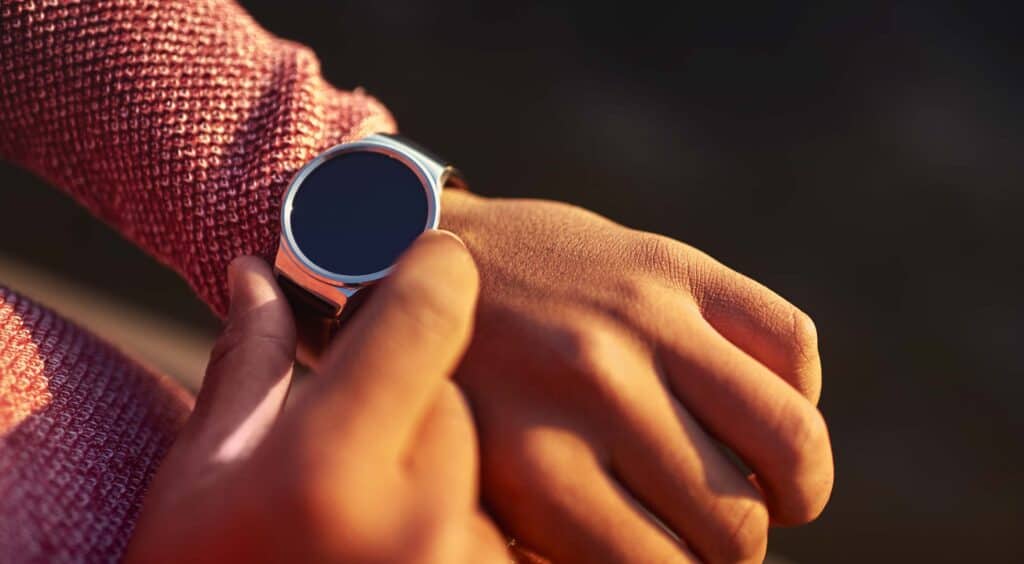Wearables are becoming increasingly important devices with a growing array of apps available. There are millions of wearable devices in the market today (including watches, wristbands, glasses, earphones, and rings) and even more are coming.
If you haven’t designed for these devices, chances are you’ll have to soon. But wearables present a unique set of challenges when it comes to design. Designers are quickly learning that the rules they use for desktop and mobile design don’t necessarily work on the tiny screen of wearable devices. New rules apply.
Below are 5 essential rules that you should keep in mind when designing for a wearable device.
1. Keep It Simple
The well known KISS Principle is perhaps even more relevant in the domain of wearables than in desktop or mobile user interfaces. Screen size on the majority of wearables is really small. When you’re designing for a device with a screen even smaller than a smartphone, you have to optimize for simplicity while staying hyper-focused on your end goal.
[pullquote]Apps for wearables should be designed to support your app’s core functionality[/pullquote]
Apps for wearables should be designed to support your app’s core functionality. Don’t include unnecessary features, actions, or content in your app’s wearable UI. Instead, focus on single use case and cover it by creating an efficient flow that helps users complete tasks quickly.
Complex apps that require a lot of steps to complete tasks may be difficult to interact with on a watch. Make interactions as easy as possible. Reduce the number of steps needed to complete a task. Create efficient flows that help users complete tasks quickly and easily.
Avoid relying on a large amount of user input to use the app. When designing apps for wearables, focus on use cases that make sense for the wearable environment.
2. Make It Glanceable
No word has been thrown around in wearable design quite as much as “glanceable.” In a context of wearable devices, glanceability is about figuring out exactly what the user needs to see at any given moment. People using wearables are regularly in motion, whether they are standing, acting, or running to catch a bus.
Keep interfaces uncluttered and easy to read. For wearables’ limited screen real estate, it’s crucial that designers focus on displaying only the most critical information. Easy-to-read snippets of information work best.
Test your designs in situations that involve user movement to make sure the design is usable at a glance. A user should be able to consume content made for wearables in less than 5 seconds. Shazam is a great example of a glanceable wearable app: the app helps users immediately identify each screen’s message and the app’s intended action.
3. Prioritize Information
Android Wear guideline perfectly summarise this point:
Wearables provide the right information at the right time, allowing users to be more connected to both the online and real worlds.
The information pushed to users via a wearable should be filtered: prioritizing what is necessary and what can be looked at later in the day should be at the forefront of design. Developers should limit the data being shown and, in most cases, only provide users with the minimal amount required to undertake an action. For that, you need to understand what any given person actually needs to see. A good example of this is Google Now, Android Wear’s personal assistant that analyzes repeated actions and contextual information to serve up relevant information.
4. Opt For More Privacy
Wearable devices can display extremely personal information: private conversations or health data. Unlike smartphones, which are usually concealed in a pocket, wearables are in plain sight and everyone around the user can (potentially) see a personal information. Given the choice, designers should always opt for more privacy. For example, when designing a notification about an incoming message, a wearable device should vibrate first, display second.
5. Minimize Interruption
Even on large-screen smartphones, incoming notifications and alerts are often disruptive. But when wearable devices require a lot of attention, this can make people abandon them. It is one thing to have a mobile device buzz in your pocket, but It’s a completely different thing to have something buzzing that is right up against your skin.
Constantly buzzing device will be really annoying for users. Thus, prioritize all events and notify users only when information is really required their attention. Users shouldn’t be interrupted by notifications.
Conclusion
The wearable interface presents unique usage opportunities that are not available on a traditional desktop or mobile devices, but at the same time, it comes with a lot of limitations. You should consider both the capabilities and limitations of this medium when designing apps for wearables.
